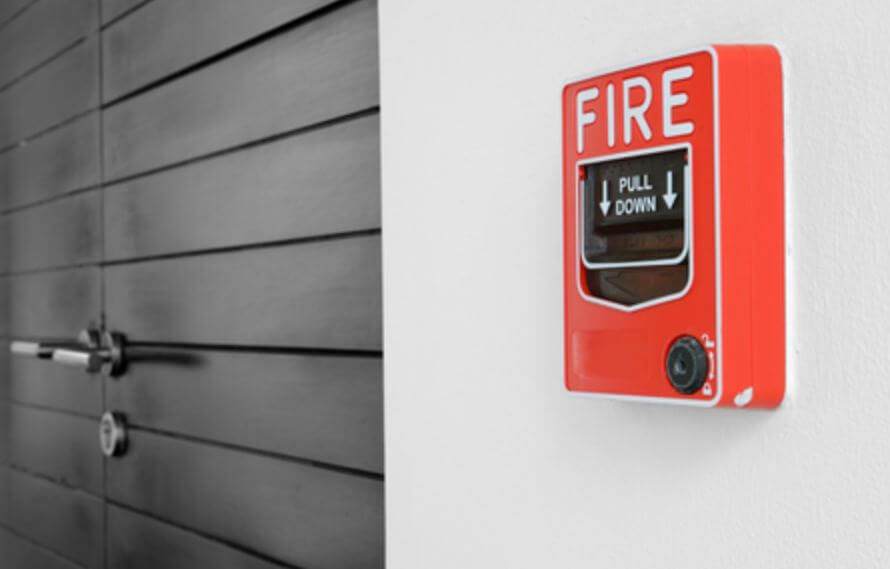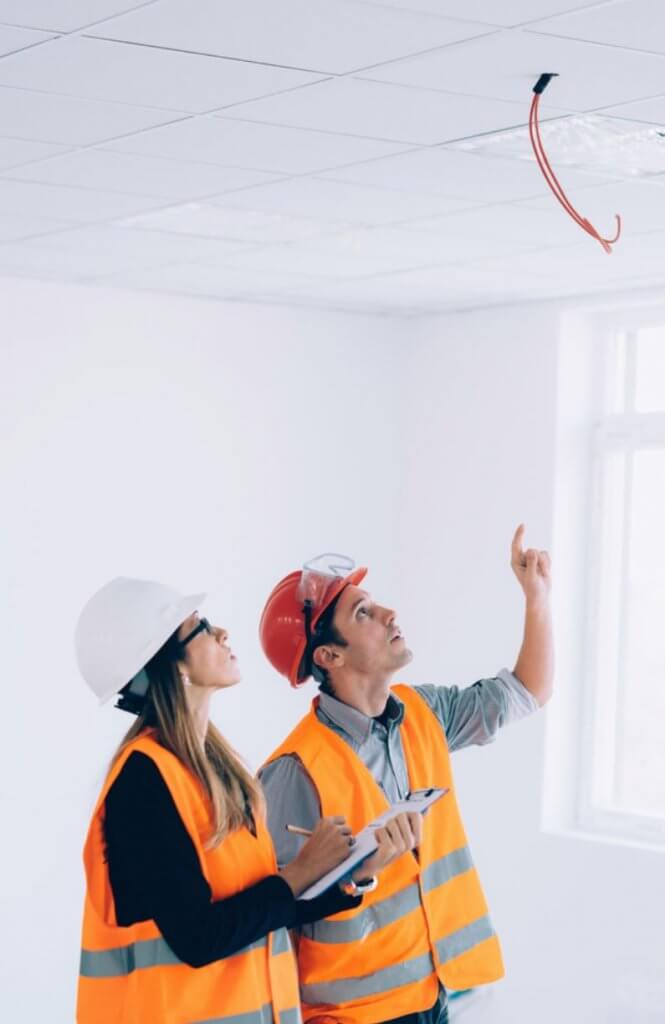Business fires cause hundreds of millions of dollars in damages yearly, making this one of the most vital safety issue for business owners and facility managers to resolve. Knowing fire alarm systems and the connected federal, state and local rules can help determine the best vendor and system for your business's safety needs.
This guide focus on system components and types of alarms, fire sprinkler heads and other accessories, looking on how fire alarm systems fit in with security usually provides tips to help you choose your system vendor.

Components of a Commercial Fire Alarm System
Today's commercial fire alarm systems are able to locate an issue, generate an alarm to alert the building and send a notification to the monitoring entity so that emergency responders can be sent, and activate the fire sprinkler heads installed in the building. The monitoring entity may have a protocol for checking if this is a real alarm. Verification could be a phone call or sending a video feed of the commercial space. This can be a vital step as false alarms generate a response from the fire department can result in your business being fined.
There are several components to a commercial fire sprinkler heads alarm system, including:
- Control panel - checks input and system integrity and controls output and sends feeds
- Power supplies - consist of both primary and secondary (back up)
- Initiating devices - these are the devices that indicate if there's a fire. There are two types:
- Automatic: These are detectors that can measure smoke, temperature, CO2 and fire.
- Manual: These are usually people that initiate them. Examples include pulling stations and alarm buttons.
- Notification devices - these alert building occupants about the fire. For example, sirens, speakers, and flashing lights.
- Building safety notifications - these are the things that help people exit the building safely, such as large exit lighting and ventilation systems that are able to redirect poisonous smoke.

Systems may also include sensor-activated fire sprinkler heads, remote monitors and control panels, two-way communications, large fire doors, and elevator recall capabilities. They may also be combined with other security systems or smart office technology.
Types of Fire Alarms
There are two primary kinds of fire alarm systems, there are pros and cons for them. While both link initiating devices like pull stations and smoke detectors to the control panel, they differ in functionality and how it works
Conventional: These systems connect each device to the control node on its own wire and can be fixed up in zones. When an initiating device is turned on, the system can recognize the zone of the device, which can help to somewhat pinpoint the location of the fire. For example, if the building has five floors and each floor is a zone, the fire department will be notified which floor the fire is on based on the zone that triggered the alert. However, they will not know the exact location on that floor. For a small business, you may only need one zone and, these devices are less expensive, this may be the most basic and cost-effective option available.
Addressable: This is a digital system and each device has its own name on the system, which means you can pinpoint the exact location of the alarmed device and send fire personnel to the location of the fire. these devices are linked on one wire that is looped to the control panel. This means that if one end is damaged by the fire, the system can still send alerts to the control panel using the other end of the loop. since each device sits in a loop isolation node, the circuit won't break even if it becomes burnt or damaged. Also, these alarms have added features, such as clearing the flow of air through smoke detectors to lessen the risk of false alarms - that can be a money saver in the long run. These systems are customizable and normally used for larger buildings or complexes.

Integration with Office Security Systems
Fire alarm systems must adhere to local, state and federal rules and codes, which today includes fire detection, signalling and emergency communications, usually in planning your system, you or your vendor needs to understand the impact of the Americans with Disabilities Act (ADA), the Occupational Safety and Health Administration (OSHA) standards, and The International Building Code (IBC). It is vital to work with contractors or security dealers who typically understand the rules that impact the plan and installation of your fire alarm system.
Combining your fire alarm system into your overall security system can be useful for several reasons. It can:

Improve your fire alarm system performance. Most of the devices for your other security needs may improve your fire detection and prevention. For example, your video detecting system may help you survey where a fire is when an initiating device is alerted and may turn on the monitoring node validates the alarm (and avoid alerting the fire department in cases of false alarms). In an emergency, integrated systems can allow easier exits for those in the building and better access for emergency personnel.
Save money. Combining your security services, including equipment, installation and monitoring, with one vendor may save you money. Make sure to ask for this when you get estimates.

Increase your smart office functionality. Smart office technology can assist you better regulate temperature, turn lights on and off when not being used, and manage security remotely. Vendors can tell you about the additional features available with popular alarm systems.
